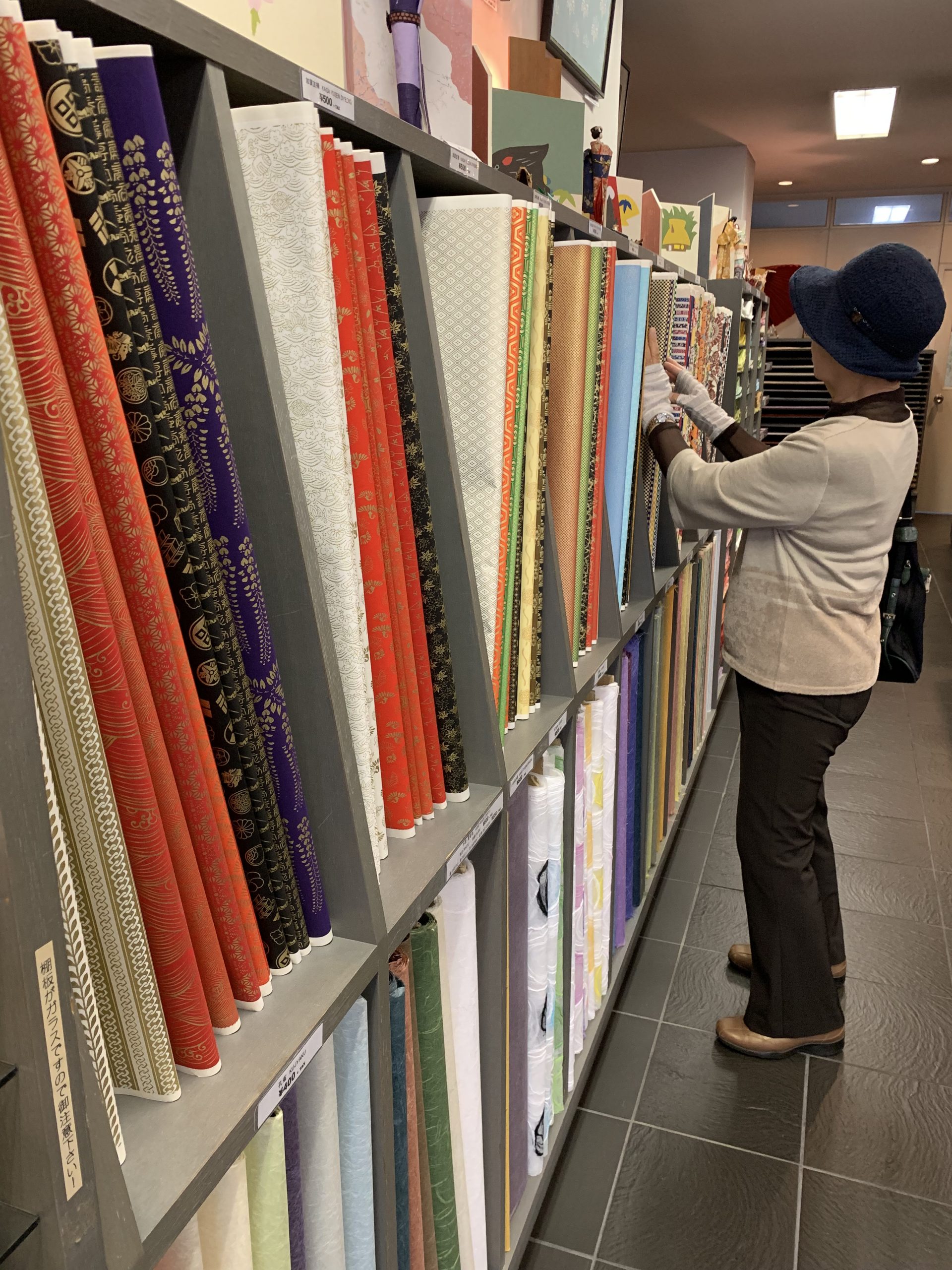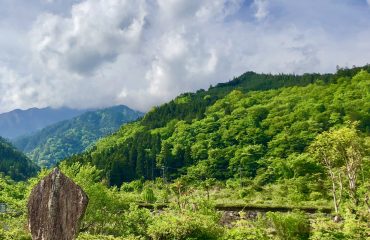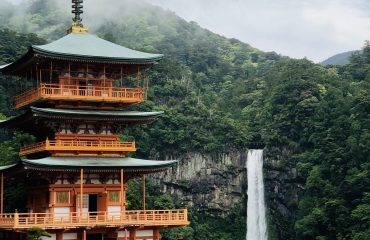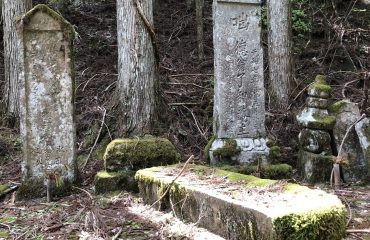Kyoto Fibers – From Kimonos and Nishijin to Sashiko and Handmade Paper
With one of us educated in fiber arts and experienced in papermaking, knitting, clothes design, weaving and sewing (hint, it’s not Gary), we’re always on the look-out for local fibers. In Kyoto, that means silk, Washi (handmade paper), ancient dyeing techniques and much more, all of which were on our itinerary.
Washi – Handmade Japanese Paper
We didn’t waste any time. After our day-one-visit to Kiyomizu-Dera Temple, we headed to Downtown Kyoto to Morita Washi, which specializes in washi, or Japanese handmade paper. While you can find washi at specialty stores in the US, this store had a much broader, more beautiful selection than anything we had ever seen.

They had all the expected paper-made products, from notebooks to origami, but what was most impressive were the massive sheets stored like bolts of fabric, each unique. There were drawers of paper, specialty paper behind glass and small sheets. Washi could be found with solid colors, natural and vibrant, or with intricate patterns and art, some was printed or painted on. The paper itself could be made from wood, cotton, silk, rice and mulberry.
It was easy to get lost in Morita Washi for a couple hours and walk out with a few purchases. Our only regret was we didn’t have more shipped home.
Getting there: From Gion, it is a straight shot east across the bridge and into Downtown Kyoto, about a 20-minute walk. There are a few small turns, so we just entered 298, Ogisakayacho, Shimogyo-Ku in the GPS to get us there.
Nishijin Textile Center
Kyoto is known for its kyo-yuzen textiles and silk dyeing, and since the 15th century, its weavers have been centered in a textiles area known as Nishijin in Northwest Kyoto. This is the same area as the Golden Pavilion and Ryoan-Ji, and Nishijin was a perfect stop after visiting those sights.
Here you find both the Nishijin Textile Center and the Orinasu-kan Museum. We heard the museum was a better way to learn about Kyoto’s textile history, but it is closed on Monday (Always good to check these things in advance. Other than the major temples and shrines, many places in Kyoto are closed one day a week). We toured Nishijin Textile Center, which was more touristy, but still a nice experience, viewing displays on each of the three floors and shopping on the second floor.
We stayed for the Kimono fashion show, which runs nearly every hour, a thoroughly enjoyable experience (especially after walking all day). The kimonos were beautiful, each showing different styles and colors.
Getting There: We’d like to be more precise, but we came from Ryoan-Ji and got on the wrong bus, switched and then got off at the wrong stop. It happens. But we heard that bus 9 is the best route. It’s also close to Nijo-jo Castle, so combining the two sights is smart plan.
Sashiko Stitching
Reusing textiles has a long tradition in Japan for economic and spiritual reasons, and sashiko stitching is a wonderful example. Sashiko combines country style with intricate designs, all made with a simple running stitch that makes cloth stronger. It evolved in the Edo era as winter work in northern farming communities where hand sewing was essential. It offered warmth and thrifty recycling, and strengthened work clothes and household goods.
At a time when laws prevented lower classes from wearing bright colors, Sashiko stitching used indigo and white colors, with stripes no thicker than a straw and patterns no bigger than a grain of rice. Not only did these colors give Sashiko a strong tonal contrast, but the indigo dye strengthened fibers, and the residual scent of fermented indigo and ammonia in the dye was believed to repel snakes and insects
By the 1950s, Sashiko had declined, but the stitching was preserved and can now be found in museums as an example of folk art. We didn’t find Sashiko in Kyoto, but later we found an example was hanging in a restaurant in Koyasan, and then in the southern Kii peninsula along the Kumano-Kodo, with a more modern example on a dress worn by a charming Japanese woman who was happy to model for us.


















